Are you looking for a loveable giant that’ll be the ultimate pet while keeping you safe from harm? Then you must be ready to find out more about Cane Corso dogs and German Shepherd dogs.
It’s true that these tall dogs share a desire to protect and guard their family, and they’re both pretty muscular (and somewhat intimidating) dogs. But their differences can be quite vast, so which one do you pick? The furry floof famous for its police work or the giant guard dog the Romans used for protection?
If you’re having a tough time deciding, take a look at all the information gathered below so you can make the best choice for you and your family.
Cane Corso vs German Shepherd: it’s a head-to-head battle of the best big boy!
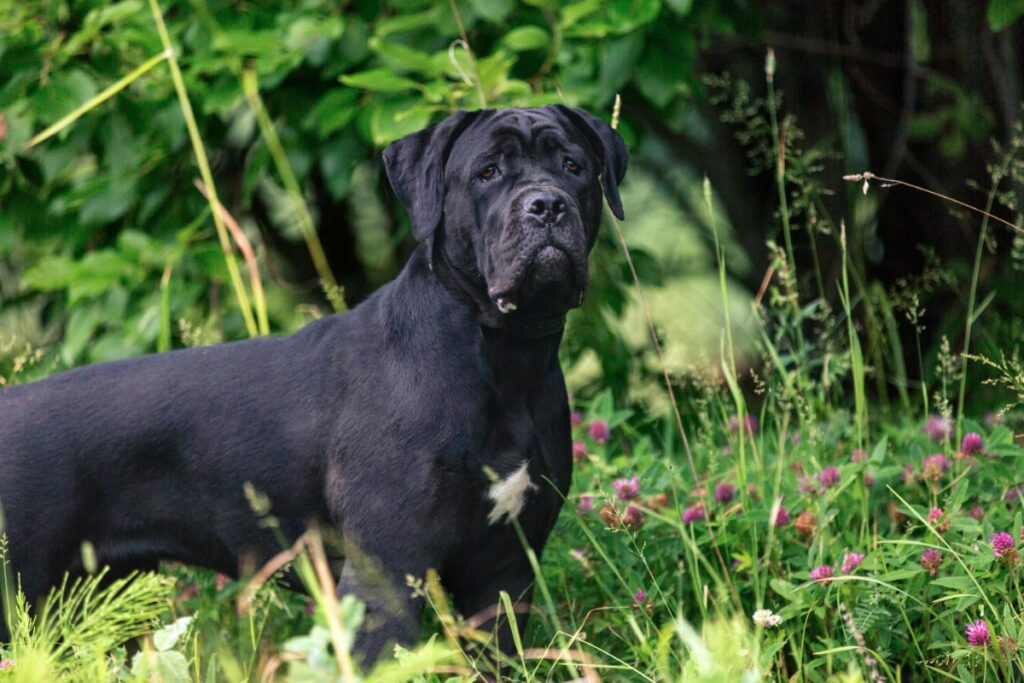
You might enjoy reading my articles on Cane Corso vs Great Dane, Bullmastiff Cane Corso Mix and Cane Corso Male vs Female
Contents
- 1 1. Cane Corso vs German Shepherd Appearance
- 2 2. German Shepherd vs Cane Corso Temperament
- 3 3. Grooming Needs of the Cane Corso or German Shepherd
- 4 4. Life Expectancy of Cane Corso versus German Shepherd
- 5 5. Health Issues of the Cane Corso vs German Shepherd
- 6 Which Dog is a Good Choice for a First-Time Dog Owner?
- 7 FAQs About Cane Corso vs German Shepherd
- 8 Wrap Up on Cane Corso vs German Shepherd
1. Cane Corso vs German Shepherd Appearance
These two breeds are pretty far apart in terms of looks on almost every level. Ready to take a closer look?
Cane Corso
The Cane Corso is enormous, classified as a giant breed. With their signature appearance, they really make a visual statement and can’t help but draw comments on their stately appearance. They have a regal posture and ooze dominance and authority with their sobering gaze.
With short hair, long, drooping cheeks, and uniquely pointed ears, there’s no mistaking this popular breed. They have a bulky and muscular (and somewhat rectangular) body that unsurprisingly has a lot of strength to it.

Image by Lucie Malouin from Pixabay
Their weight also sets them apart. The giant-breed Corso tends to weigh 90 to 110 pounds — they are not small animals! Combine that with their already strong bodies and this is one doggo you don’t want to knock shoulders with, unless you’re expecting to end up on the floor.
In terms of color, black is a common choice. But they do come in a variety of other coats, including fawn, formentino, brindle, and blue. They do have one signature marking: a black mask. The coat length is rather short and is a single type, so don’t expect a plush puppy here.
These powerful dogs somewhat resemble Pitbulls, Boxers, and other famous fighting dog breeds throughout history. They also typically have docked tails and cropped ears. These archaic practices are a touchy subject for many dog owners who view them as cruel, but there are two reasons for it.
The first reason to dock their tails is that Cane Corsos are catch-and-hold hunting dogs. This means if they’re playing with each other, they often bite and might get a little aggressive, grabbing onto the other’s tail and possibly causing injury.
With regards to the cropped ears, lice, mites, and ticks find the naturally floppy ears of a Cane Corso the perfect dark environment to hide in. Ticks carry the risk of Lyme disease, which can have serious complications on your dog’s health, and mange is another consequence of mite infestations. However, if the ears are cropped, there’s nowhere for these creepy crawlies to hide.
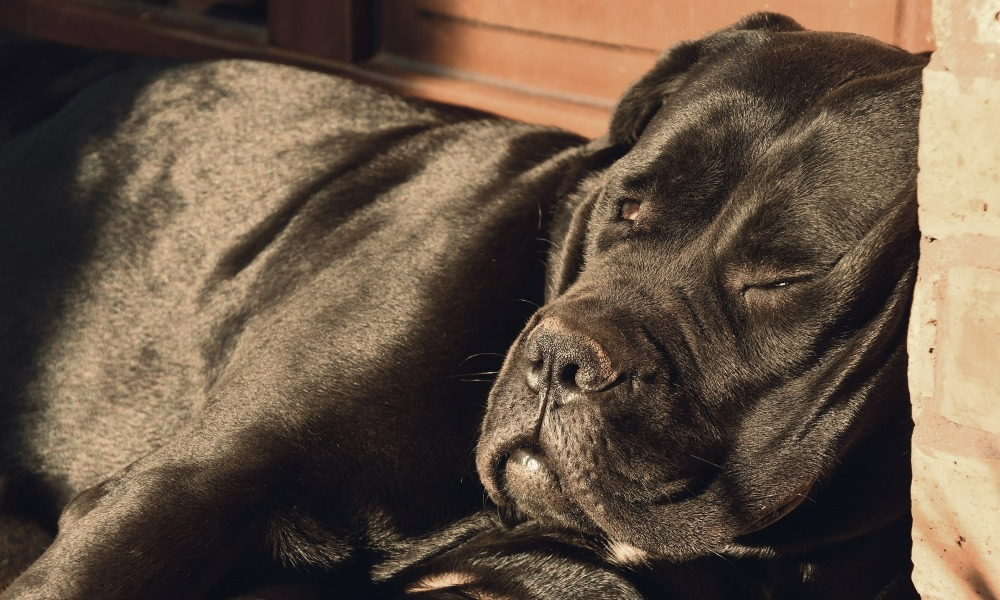
Image by Erika Varga from Pixabay
The second reason is less noble. Some people have these procedures done simply for the aesthetics or to meet the breed standard if they’re intended to be show dogs. The cropped Corso’s docked tail and pointed ears give them an intimidating appearance, which may be desired if their primary purpose is guarding. Some people are just drawn to the look, though.
The good news is that you don’t have to get your Corso cropped or docked if you don’t want to. Find a breeder that doesn’t do the procedures, or you can request it not to be done. Just be sure to take precautions such as giving their floppy ears frequent checks for parasites and supervising playtime with other Corsos; then everything will be grand.
German Shepherd
The German Shepherd, on the other hand, is fluffier and smaller. They have a slightly curved body, naturally pointy ears, and a long feathery tail. Add in their iconic coat pattern, and you have a dog that anyone will be able to recognize.
They have a very typical ratio in their facial features that gives them that classic “dog” appeal with an averagely slim, pointed muzzle. They may look soft and fluffy, but underneath that silky double coat is a muscular build ready to pounce when the situation (or their owner) calls for it.
They’re a large breed, though, smaller than the giant Cane Corso, but they make up for it in agility. A German Shepherd typically weighs 50 to 90 pounds, depending on breeding and gender. So if you have a few muscles yourself, you can pick this pupper up (probably not such a good idea with the Corso, though).
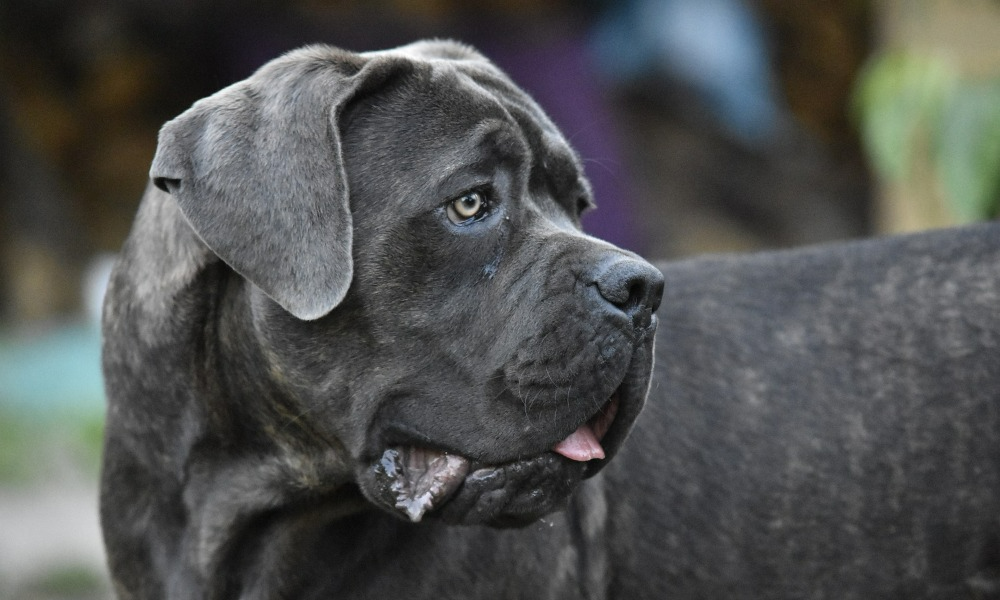
Image by agutti from Pixabay
They’re also smaller in terms of height, usually coming in at 22 inches to 26 inches. They’re not that far behind the Corso, though, which is typically 23 inches to 27 inches.
Their thicker double coats that are typically longer make them a pleasure to pet, and you can find them in various colors from silver to white, liver, blue, gray, and black. Colors like blue and liver aren’t accepted by the American Kennel Club, however, as they’re linked to faulty genes that often result in unhealthy dogs. Their standard breed colors are black and tan, though.
They also have signature coat markings, namely a black mask and black saddle. As you can see, the differences in appearance between these two dogs are striking — they’re literally like chalk and cheese when it comes to looks. The black mask is one thing that the Cane Corso and German Shepherd have in common.
You might also be happy to know that there are no bodily alterations performed on German Shepherd pups, so no docking and no cropping. The most they might get is perhaps a bit of tape on their ears to help them stand up when they’re pups, but most stand up on their own, and it isn’t painful for them at all.
2. German Shepherd vs Cane Corso Temperament
While both breeds are very intelligent and train exceptionally well with the right methods, there are some differences to note as well.

Image by Lucie Malouin from Pixabay
Cane Corso
These big boys have a reputation for aggressive behavior, and while it can be true if they’re not well-trained and socialized properly, they’re commonly referred to as “gentle giants.” They’re huge dogs with big hearts and love their family members with everything they have, showering them affectionately.
They’re also pretty protective thanks to their ancestry throughout history as guard dogs, so you can sleep well knowing you’re well looked after. However, these intelligent dogs can be stubborn boys and even have a bit of a short temper at times. This is why intense training and socialization as a puppy is so important for this breed.
It’s also important to note they have a strong prey drive, so it’s usually not recommended you get a Cane Corso if you have very small dogs or cats as it’s likely they’ll “hunt” them. Similarly, if you have very small children, be careful, as these big boys can easily knock over or hurt a tiny human, even if it’s not intentional.
German Shepherd
German Shepherds are excellent guard and working dogs, making them popular with families and working industries. They make both excellent companions and protectors, so what’s not to love? They’re crazy loyal dogs and absolutely devoted to their loved ones, even if they are more likely to pick one special family member to bond with (don’t get jealous if it’s not you).
They can be quite a dominant breed and may show aggression without proper training and socialization, much like the Cane Corso. However, the German Shepherd breed tends to be friendlier and less aloof. They’re great with children and make great family pets. They even get along with cats fairly well. They can also be an excellent service dog if you require one.
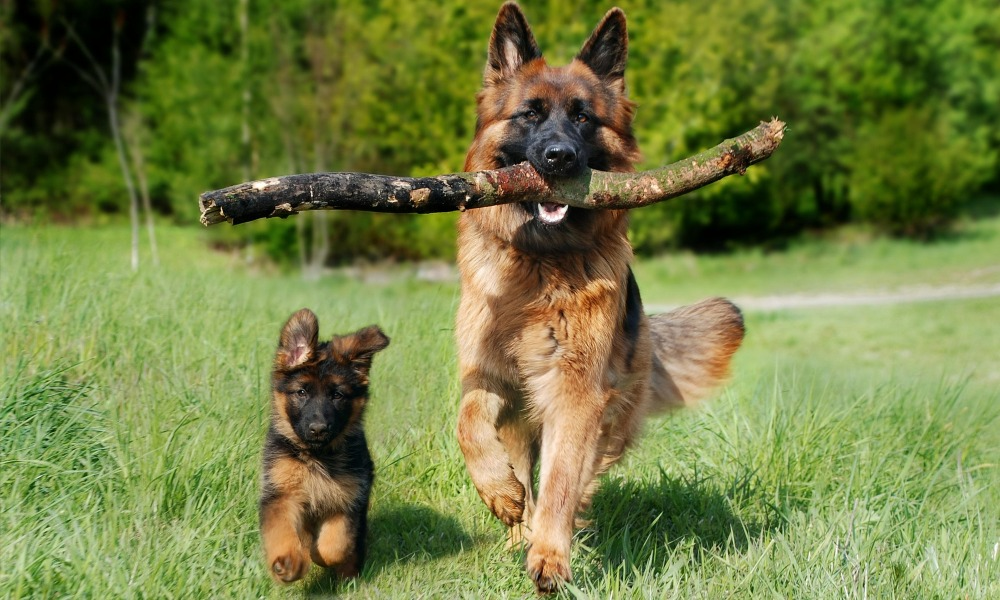
Image by Anja from Pixabay
Like Cane Corsos, they’re not the greatest when it comes to meeting unknown dogs. They can even get a bit snippy with other dogs in the household if not trained properly at a young age to play nice with others.
3. Grooming Needs of the Cane Corso or German Shepherd
Luckily for Cane Corso aficionados, these doggos have very low grooming maintenance. This is thanks to their single, short coat that barely sheds. Their beautiful coarse coats are even waterproof, so they handle temperamental weather very well.
They do tend to have some skin folds, though — perhaps more if you have a chubby Corso. So cleaning the skin folds is imperative to avoid bacteria build-up.
German Shepherds on the other hand need quite a bit of brushing, thanks to that double coat. They also shed a lot, and by a lot, I mean get ready for piles of fur for a long time, especially during a change of season.
You might enjoy reading my articles on Short Haired vs Long Haired German Shepherds, Jokes about Dogs and dog breeds that don’t smell or shed.
4. Life Expectancy of Cane Corso versus German Shepherd
Even though there are a lot of differences between these wonderful breeds, there are a few similarities besides their desire to protect and guard. How long they live is one of them. The Cane Corso lives for an average of 10 to 12 years, which is pretty decent for a breed of this large size.
The large breed German Shepherd has a slightly lengthier or shorter life span of 9 to 13 years. This is all dependent on how well they’re looked after and how well they’re bred, as any congenital issues can shorten the lifespan of either.

Image by Malgorzata Duszynska from Pixabay
5. Health Issues of the Cane Corso vs German Shepherd
It happens to the best of dogs. Here are some of the common health problems of these big dogs.
Cane Corso
Being one of the large breeds, one of the most life-threatening conditions a Cane Corso can experience is bloat. No, not the kind you get when you eat too much gluten and your jeans get a bit tighter. In dogs, it’s a medical condition where the dog’s stomach twists, trapping air and preventing normal digestion from happening and certain organs from getting blood supply.
It can happen easily, especially if they eat too fast or if they just inhale too much air. The odds get higher as your dog gets older, as muscle walls weaken and the twist can happen more easily.
Hip dysplasia is common, and, with their short coat, Corsos can also get demodectic mange. This is caused by an aggressive little parasite that works on hair follicles and can leave your dog with skin inflammation and hair loss. It’s not deadly, but it’s high on the uncomfortable and itchy factors.
Corsos also have a tendency for entropion, an eye condition where the eyelid turns inward and those little hairs scratch at your dog’s eyes incessantly. It’s definitely a vet-emergent case if you notice this happening to your Corso.
German Shepherd
Sadly for German Shepherds, they’re prone to a number of congenital health issues. A good breeder will find dogs that don’t carry as many of them, but if you opt for a cheaper pup, you might find yourself with a higher vet bill in the end.
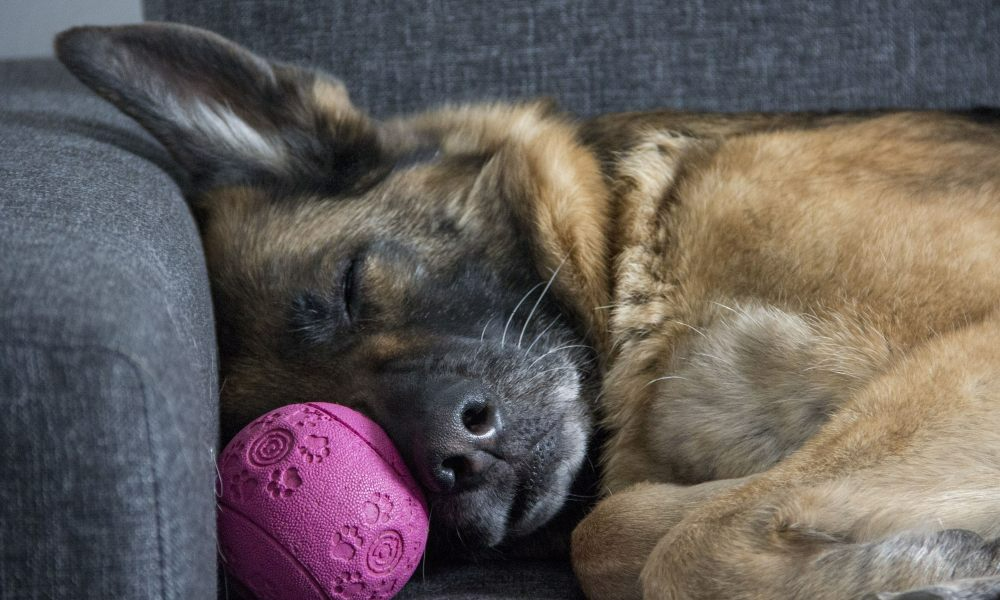
Image by Viveka Rosin from Pixabay
Dysplasia is common in their elbows and hips and can cause mobility issues and a large degree of pain. Operations are often needed to alleviate these problems. They can also get some pretty serious issues like epilepsy. It’s possible that your Shepherd can have epilepsy but never have a seizure if they’re kept out of stressful situations, though.
Hemophilia is also a common and dangerous health problem with these dogs that was caused by a lot of inbreeding. It means their blood is unable to clot, so if they get a tiny cut, they could potentially bleed to death if vet treatment isn’t sought immediately.
Older Shepherds tend to get cataracts and diabetes as they age, so regular vet checkups in their later years are mandatory to keep an eye on them.
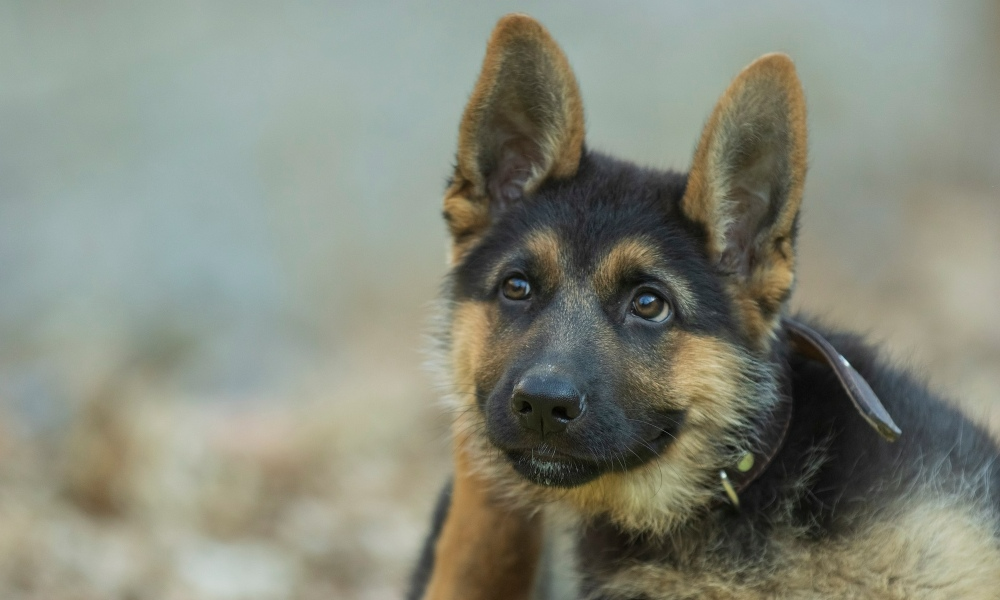
Image by mostafa meraji from Pixabay
Which Dog is a Good Choice for a First-Time Dog Owner?
Honestly, both of these breeds have high training and exercise needs and their friendliness towards strangers is low. So if you’re a first-time dog parent, tackling such a big commitment with a canine companion that needs this much work might not be the best step. Perhaps get your feet wet with a low-maintenance dog breed first.
That being said, dogs are long-term commitments, and maybe you don’t want to wait 10 to 15 years to get your ideal Cane Corso or German Shepherd. In that case, get in touch with local dog trainers and learn all you can about your desired breed, and be prepared to learn a lot fast. German Shepherds tend to be a bit easier, so perhaps start with one of them. And remember, only ever buy puppies from reputable breeders.

Image by thraniwen from Pixabay
FAQs About Cane Corso vs German Shepherd
Do you have any lingering questions about Cane Corsos vs. German Shepherds? Check out some of these common questions and their answers below.
Which Dogs Have the Loudest Bark?
This title goes to Golden Retrievers. There’s one named Charlie who has held the Guinness World Record for the loudest bark since 2012, and he hasn’t been outdone yet. However, the second on that list is German Shepherds.
Their loud bark makes them excellent guard dogs and police dogs in a working capacity. Cane Corsos didn’t make the list, but surprisingly terriers did (if you’ve ever heard a Yorkshire Terrier yap, you’ll understand why).
This is probably because Cane Corsos tend to be quieter dogs, only barking when the situation calls for it. This can vary from Corso to Corso, though, as some tend to be more vocal than others and can develop issues with incessant barking and howling.
Will a German Shepherd Protect You?
One hundred percent, yes. They’re popular guard dogs for their strong protective instincts, and a pet German Shepherd treated with love will do anything to protect their family. Although they’re a more socially renowned protective breed, that’s not to say the Cane Corso isn’t protective.
These dogs are valued for their fierce loyalty and guarding abilities — they may just not be as nimble compared to the Shepherd, given its larger size. But make no mistake, the huge Cane Corso is also well known for protecting their loved ones, especially if they are trained exceptionally well.
What is the Most Expensive Dog?
German Shepherds are cheaper, costing anywhere between $450 to $1,900, although they are still considered pricey for a purebred. The better the breeding, the higher the cost usually.
They are cheaper than Cane Corsos, though, which tend to be between $700 and $2,500. The average price for one of these ancient pups is $1,500, but the higher-end price tag usually comes with better breeding.
In case you’re not sure why breeding is so important, it’s because higher-end breeders are very picky when it comes to choosing mating partners. They will pay a high price for a healthy purebred with good genes void of congenital issues to offer the pups.
Genetic testing is also often done on the pups as well to check that the most common congenital issues are not present in the event a throwback gene makes its way in. So the higher price is worth it for a pup that’ll live a longer, healthier life.
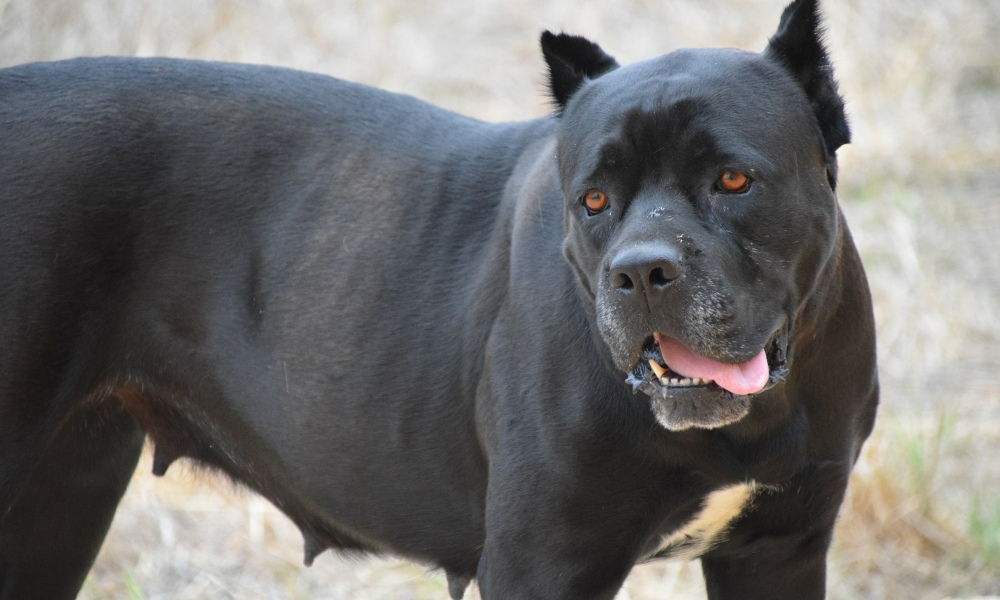
Wrap Up on Cane Corso vs German Shepherd
At first glance, Cane Corsos and German Shepherds seem to have nothing in common. But if you get to know a bit more about them, you’ll see how similar they can be in the most important way: how they love their families and how protective they are.
They also share a few characteristics, such as their high energy levels, need for exercise, and intelligence. But there are many ways in which they differ that will have you leaning toward one or the other.
Heart set on the Cane Corso? Then have a look at the Cane Corso male vs. female to see which suits you best.

